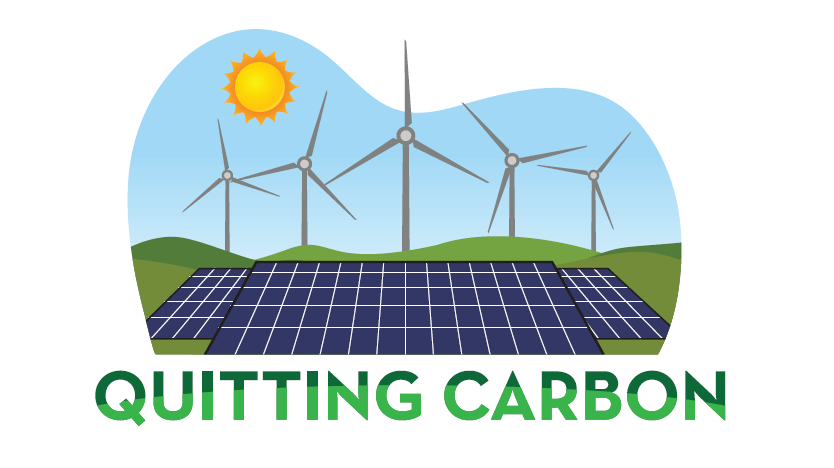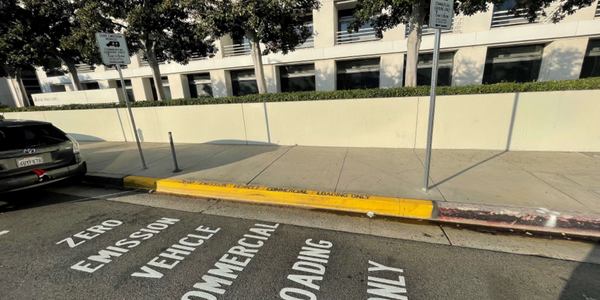A glimpse of the future of aviation
On the sidelines of the Biggest Little Air Show in San Carlos, California, Quitting Carbon got an up-close look at the B23 Energic all-electric plane.
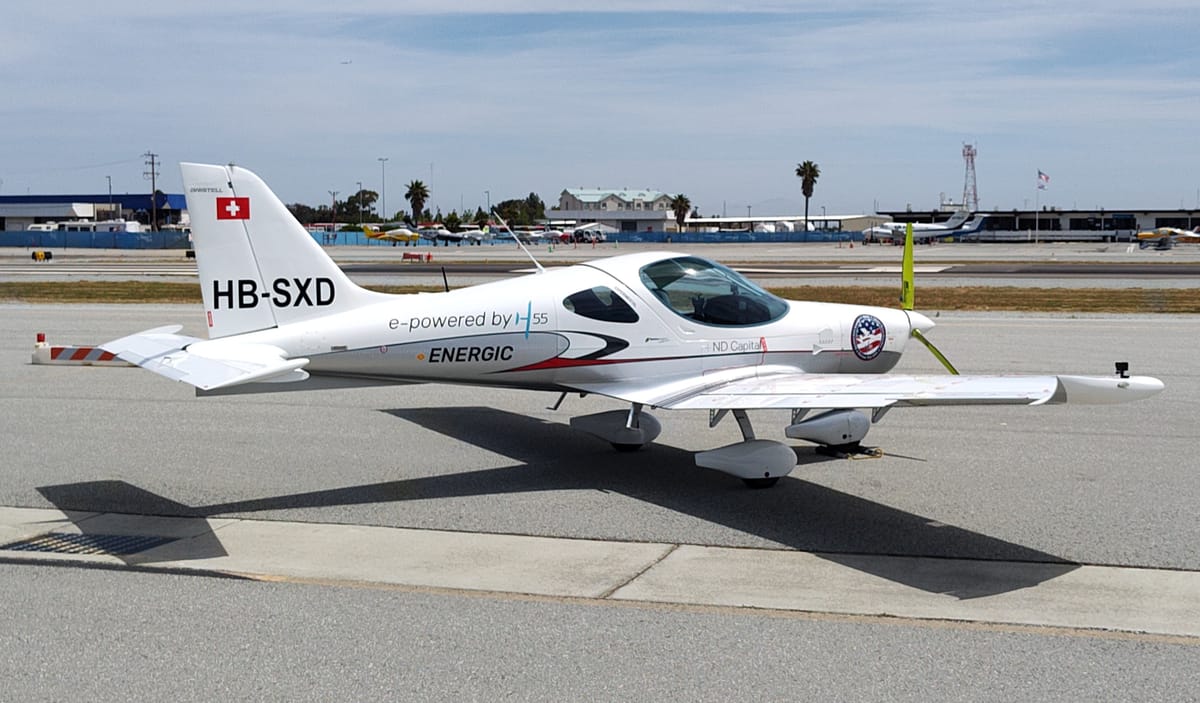
Quitting Carbon is a 100% subscriber-funded publication. To support my work, please consider becoming a paid subscriber or making a one-time donation.
Compared to the whine and roar of the planes that came before, when the plane I had come to see appeared, the first thing I noticed was the lack of noise. As the plane circled back, and glided overhead on its second pass, the plane’s electric motor gave off a soft hum.
The several hundred aviation enthusiasts who lined the taxiway with me at San Carlos Airport, heads craned towards the sky, had likely come to see that morning’s finale: an acrobatics display featuring the Sukhoi West Demo Team.
I had come to see the B23 Energic. The plane’s diminutive size – it measures just under 22 feet from nose to tail and a little more than 30 feet wide at the wings – belies its outsized role in the future of aviation.
Airports are already busy reducing emissions from operations on the ground and at the gate. Emissions from planes in flight account for a much larger share of the sector’s overall carbon footprint and will be commensurately difficult to clean up.
Travelers alive today may never fly across and between continents on fully electric planes. But that doesn’t mean there isn’t a role for battery electric planes today.
In fact, the B23 Energic will be used to train the next generation of European pilots beginning next year.
The Solar Impulse legacy
I was excited to see the B23 Energic in person last Saturday at the Biggest Little Air Show because I had seen one of its predecessors more than 15 years before. In 2009, on a press tour for European journalists (I was based in Copenhagen at the time), I got a look at the Solar Impulse – a solar-powered plane that would become the first plane to circumnavigate the world without liquid fuel – inside a hangar outside of Zurich, Switzerland.
A core team from Solar Impulse, including pilot André Borschberg, brought learnings from the project to a new venture, the startup H55.
H55’s specialty is developing electric propulsion and battery management systems for existing and future airplanes. Experience the company’s founders gleaned from years spent building lightweight, super-efficient planes capable of circling the globe, powered by solar panels and batteries alone.
The company’s name honors that legacy. “H55” refers both to a military hangar called hangar 55, the company’s early home in Switzerland, and to the Solar Impulse pilot Borschberg’s record-breaking 5-day, 5-night solo flight from Japan to Hawaii in July 2015.
The B23 Energic
The Solar Impulse project was launched to inspire and to prove that fuel-free flight was possible.
The B23 Energic may not end up stirring the public’s imagination as the Solar Impulse once did. But because it soon may be the first plane many new pilots fly, it could convert the next generation of pilots into evangelists for all-electric flight.
The B23 Energic is a two-seat, zero-emission trainer aircraft manufactured by the Czech plane maker BRM Aero under the Bristell brand. For the electric version, BRM Aero took out the gas tank and combustion engine and replaced it with H55’s electric powertrain: the motor, motor controller, power distribution unit, battery management unit, and battery packs (photos #1 and #2 in the gallery below).
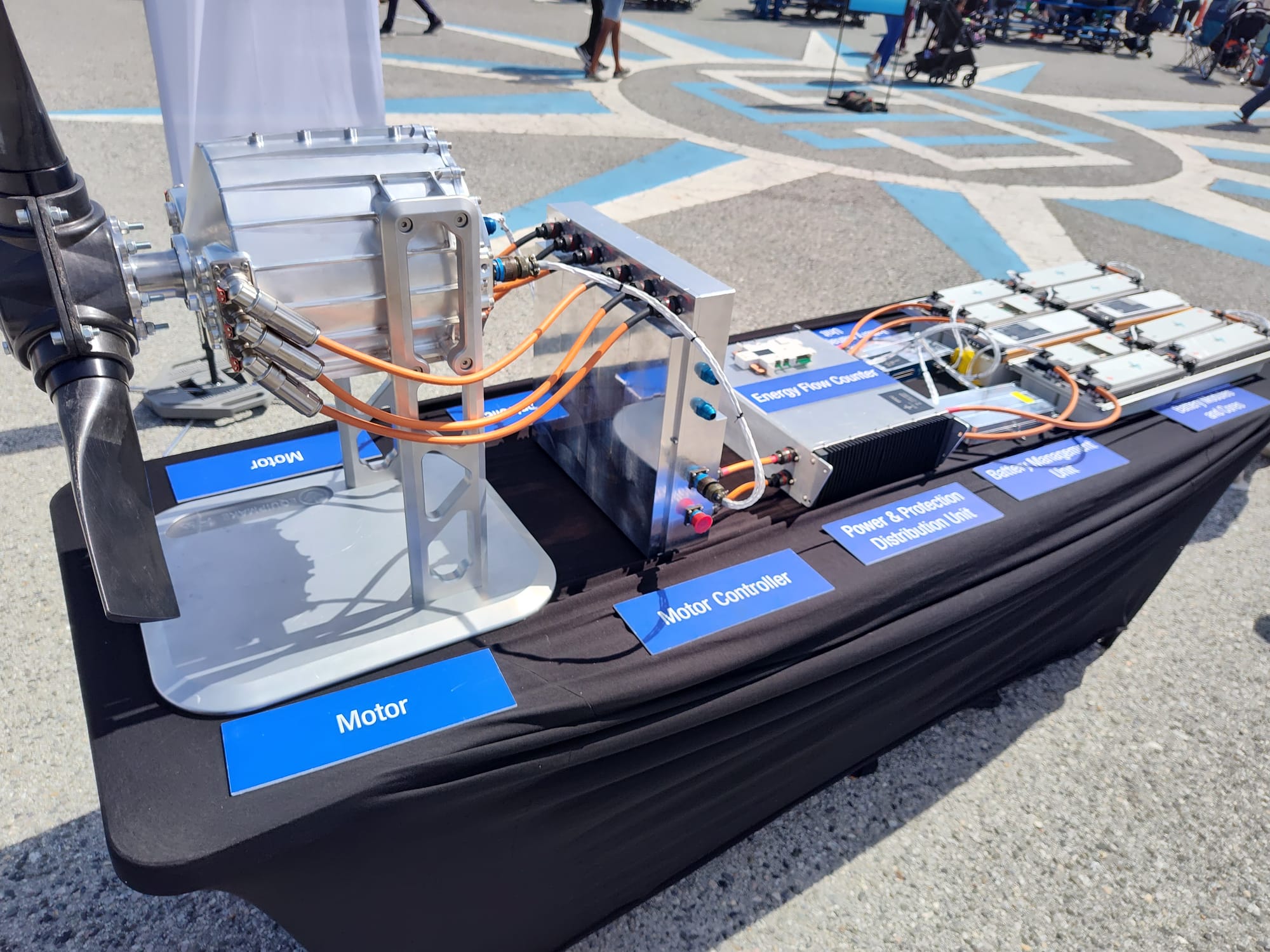
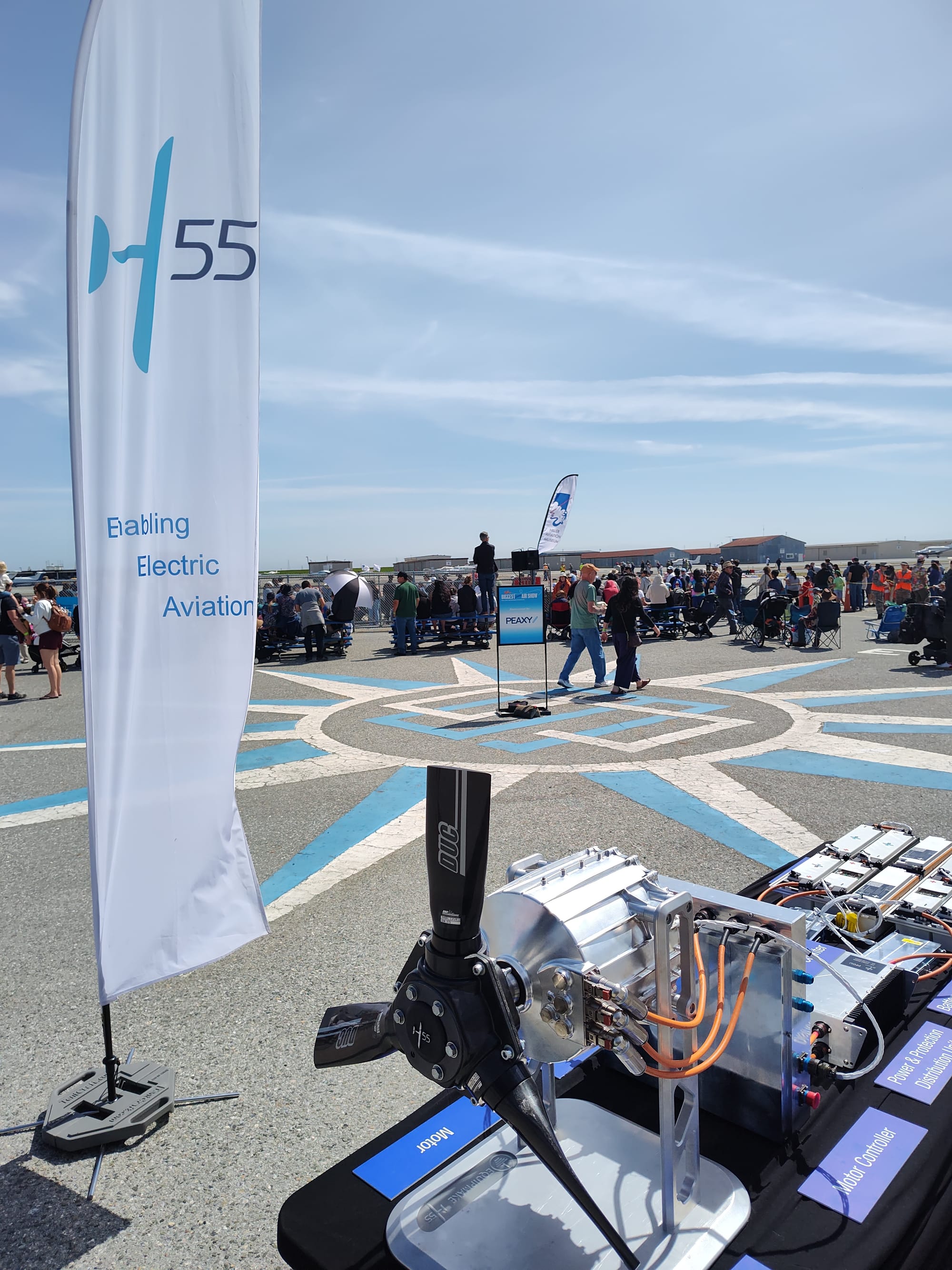
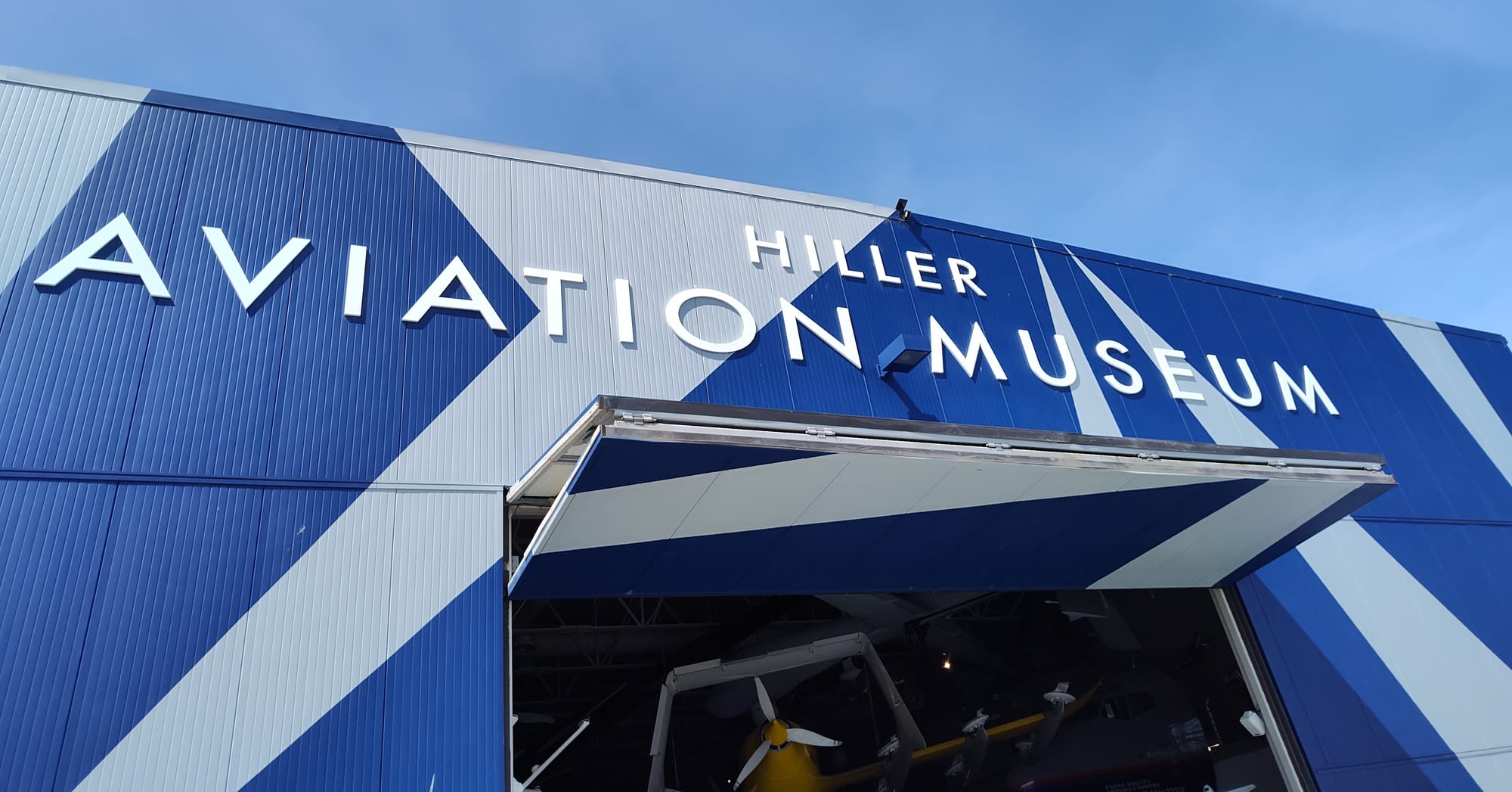
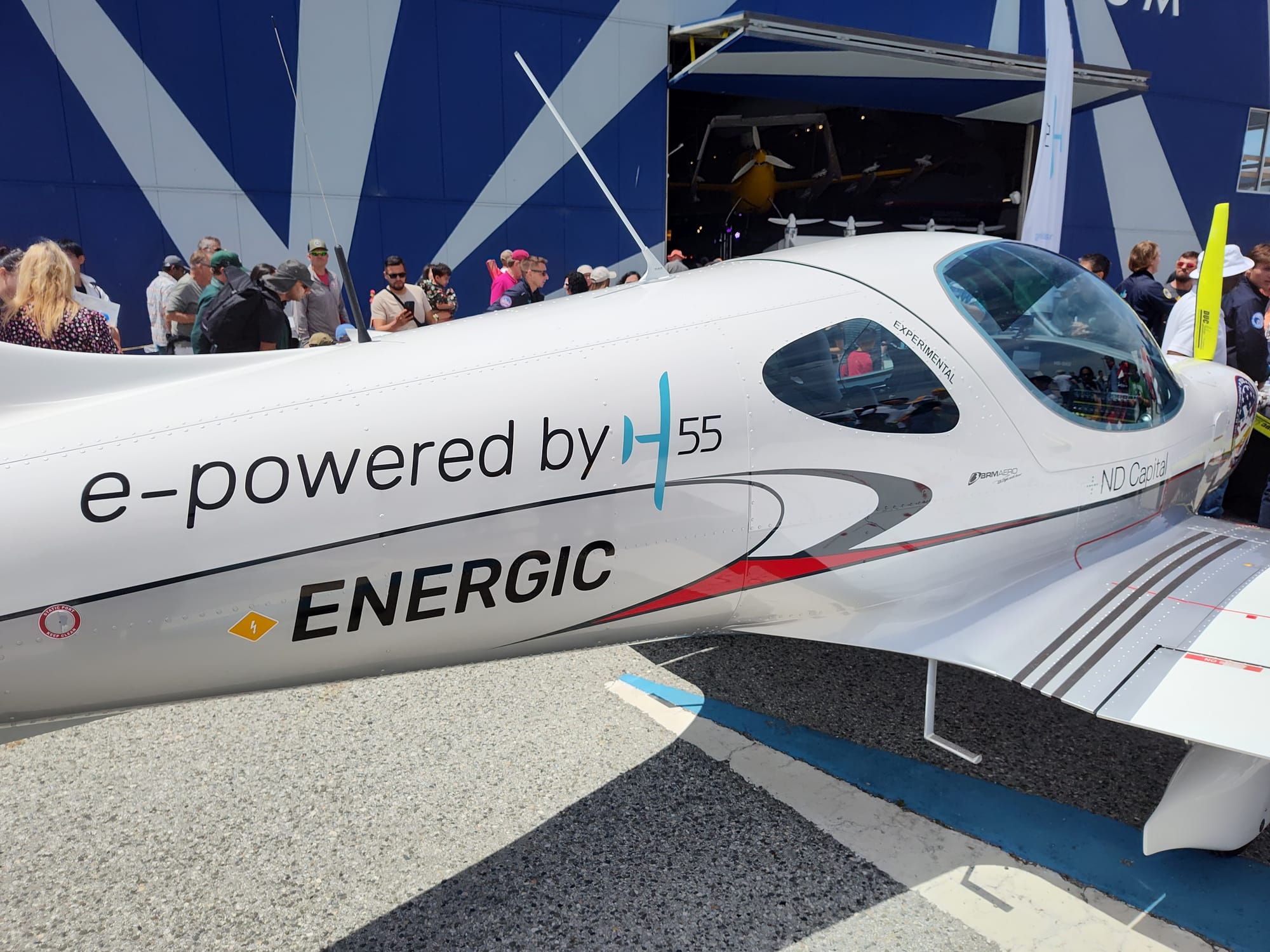
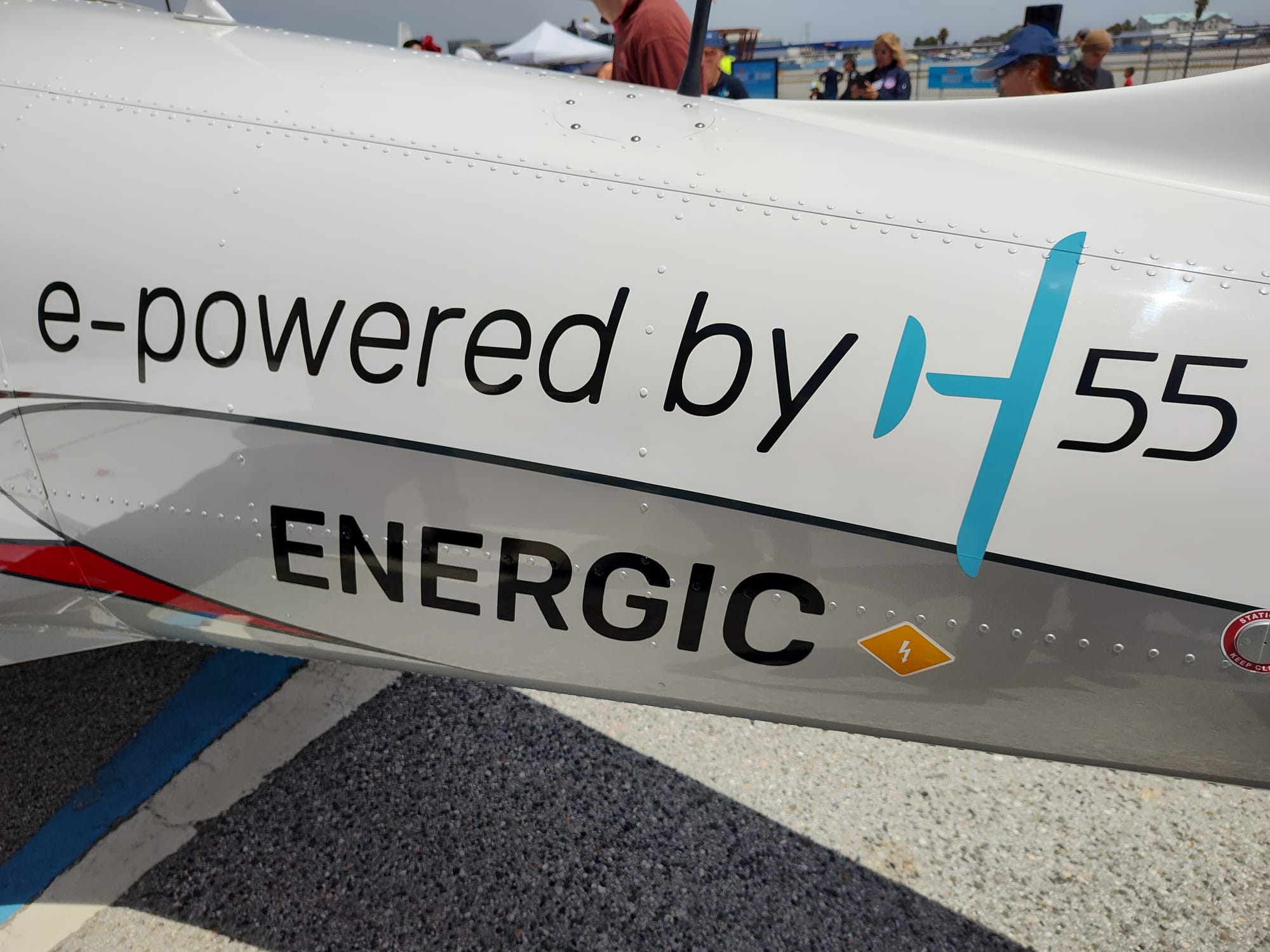
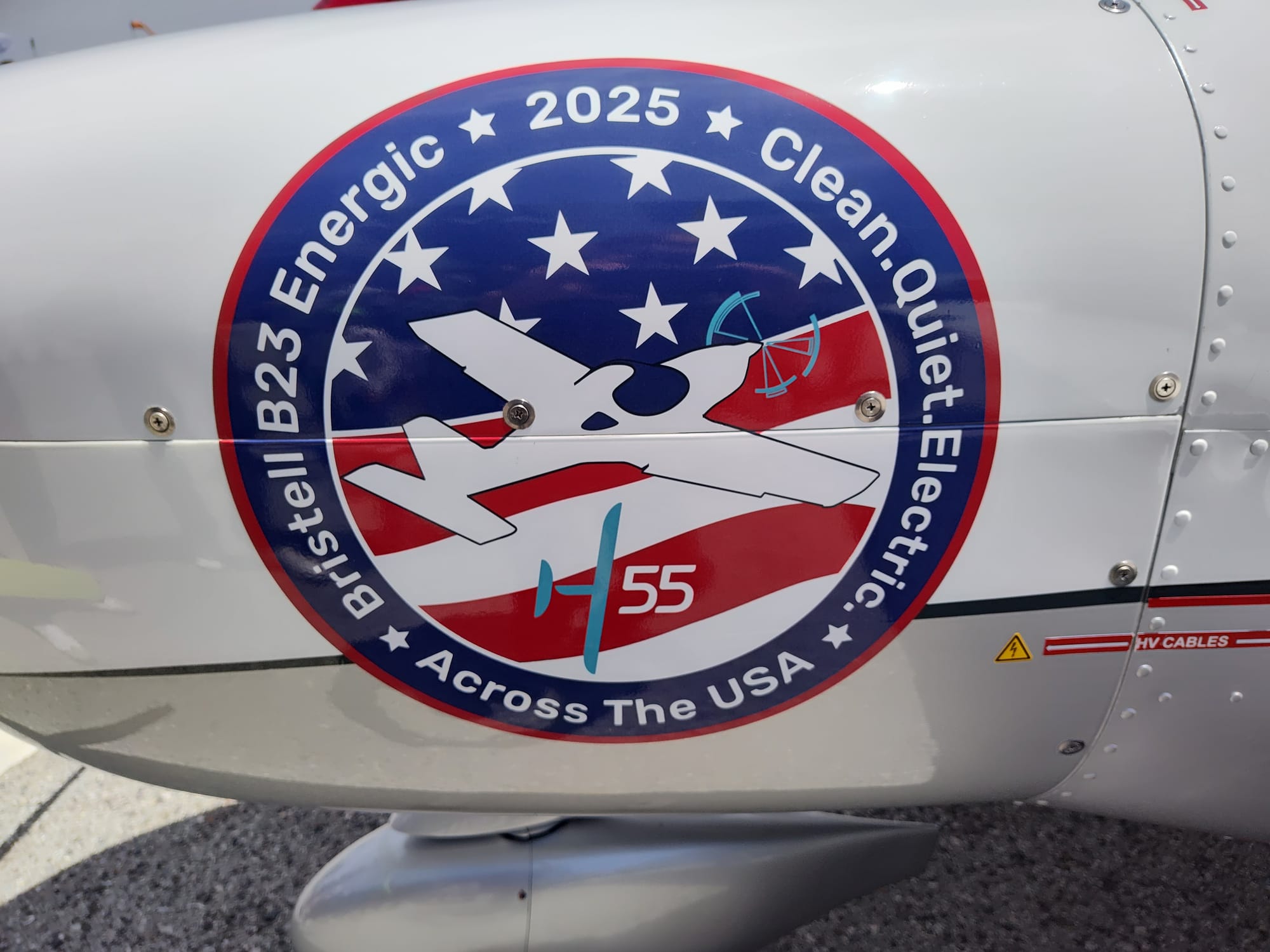


The Bristell B23 Energic all-electric plane on display at the Biggest Little Air Show, San Carlos Airport, San Mateo County, California, June 14, 2025. Credit: All photos, Justin Gerdes.
H55’s “secret sauce,” Gregory Blatt told me, is making the battery storage and propulsion systems talk to each other.
I spoke to Blatt, H55’s co-founder and chief marketing and sales officer, on the sidelines of the air show, which is hosted by the Hiller Aviation Museum at San Carlos Airport. H55 participated in the Biggest Little Air Show as part of a five-month, cross-country U.S. tour, with stops in Florida, Alabama, Arizona, Nevada, California, Colorado, Wisconsin, and New York.
H55 is targeting the B23 Energic at flight schools, aero clubs, military academies, and private pilots. The 100-kilowatt electric motor and 49 kilowatt-hour battery pack allows for around 70 minutes of flight time. One hour of charging yields one hour of flight time.
For flight schools, the big selling points are the low operating costs and quiet operation.
The electricity cost for 1-hour of flight is just $7 (at 20 cents/kWh), according to Bristell.
The lack of noise means that a student pilot can talk to an instructor mid-flight without a headset.
“The Bristell flies light on the stick – but the biggest difference is how quiet and smooth it is. The controls are responsive, even during taxi, and you can take your headset off mid-flight and carry on a conversation,” First Landings Aviation’s Adam Valencic told H55.
H55 plans to deploy its electric propulsion systems in larger regional commuter aircraft, too. The company is partnering with engine maker Pratt & Whitney and plane maker De Havilland Aircraft of Canada on a hybrid version of a 40-seat Dash 8 turboprop plane.
“The systems are designed to be able to scale up as battery density increases,” Blatt told me.
He says H55 expects the B23 Energic’s entire electric propulsion system will be certified in Europe by the end of the first quarter of 2026, with the first deliveries to customers coming in the second half of the year. Deliveries to customers in the U.S. and Canada will begin in 2027.

